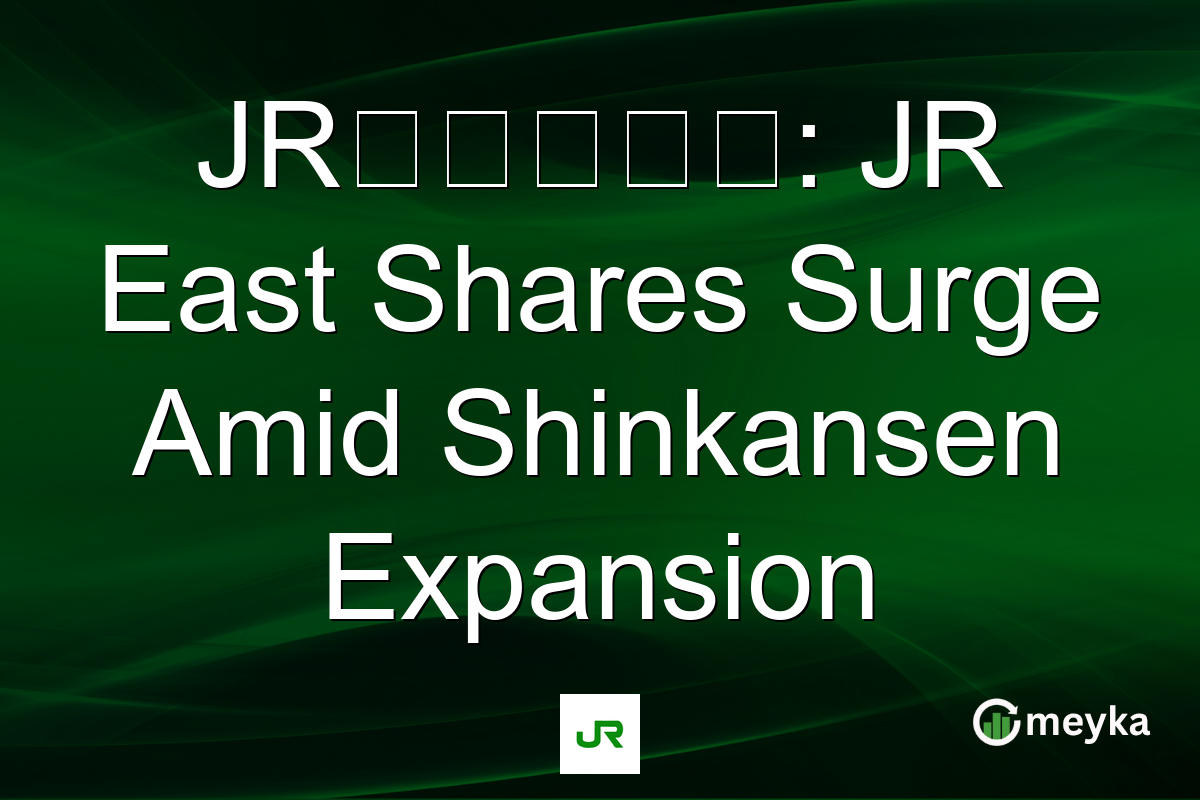JR東日本株価: JR East Shares Surge Amid Shinkansen Expansion
Today, JR東日本 (East Japan Railway Company) witnessed a noticeable surge in its stock price, as the market reacted positively to news about its ambitious Shinkansen expansion project. This move, coupled with robust summer travel demand, has sparked investor interest, leading to increased trading volume and positioning JR東日本 as a prominent player in Japan’s rail sector. Let’s delve into the details behind this surge.
Market Response to Shinkansen Expansion
The announcement regarding the acceleration of the Shinkansen service expansion and opening of new stations has captured the market’s attention. As a result, the 9020.T stock saw a significant bump, moving within a day range of ¥3,676 to ¥3,735. The current price sits at ¥3,696, reflecting a minor decrease of 0.83%, yet the overall sentiment is positive. This reaction coincides with the news about potential government infrastructure investments, which could further support the Shinkansen project. Such investment could enhance connectivity and efficiency, directly benefiting JR East’s operations. The focus on infrastructure is part of larger economic stimulus efforts, making JR East investment news a topic of interest in both domestic and international markets. With a market capitalization currently at ¥4.18 trillion, JR East is well-positioned to leverage this expansion. The company’s substantial presence in Japan’s railroads industry is definitive, operating over 7,400 kilometers of railway network. This footprint, along with anticipated government support, presents JR East as a stable growth opportunity for investors.
Financial Performance and Investor Sentiment
JR東日本株価 has been on an upward trend year-to-date, gaining 12.14%. The surge is not just driven by expansion news but also by fundamental performance improvements. Over the last year, the company’s growth metrics underline its robust financial health, despite the current minor decline in daily price. The price-to-earnings ratio stands at 18.64, in line with industry standards. Meanwhile, JR East has a strong operating cash flow per share of ¥647.28, reflecting efficient financial management. These metrics underscore the company’s capability to sustain growth, especially considering the ambitious infrastructure projects on the horizon. Market analysts remain divided on recommendations. Recently, JR East received a B- rating, reflecting a cautious perspective from some investors. However, the overall investor enthusiasm keeps the company in a hopeful position within Japan’s market landscape.
Operational Highlights and Strategic Developments
The company’s operational strategy focuses on enhancing passenger experience and expanding service reach. JR East’s network currently covers 1,676 stations, supporting a vast number of daily commuters. As part of their strategic initiatives, they’ve engaged in multiple projects aimed at modernizing infrastructure and increasing service efficiency. The recent expansion news aligns with Japan’s broader transportation goals. The project is likely to stimulate regional economic activities, given the reliance on rail transport for both cargo and passengers in Japan. In addition to transportation services, JR East diversifies its portfolio through real estate and retail operations. This diversification ensures stability, allowing the company to hedge against sector-specific downturns. Their ventures into real estate contribute significantly to their revenues, presenting a holistic approach to business growth.
Future Outlook for JR東日本
Looking ahead, JR East’s strategic direction and expansion projects present a promising outlook. Although there was a slight daily dip in its stock price, the long-term growth trajectory seems resilient. Projections estimate the stock reaching ¥3,803.41 weekly and ¥3,442.60 in the next three years, indicating potential gains for strategic investors. The focus on the Shinkansen project has also drawn attention to the company’s prospects amidst a recovering travel industry. Emphasizing infrastructure expansion, along with anticipated government support, could uniquely position JR East to capitalize on the burgeoning demand for rail travel in Japan. Moreover, Meyka can offer insightful tools for investors aiming to monitor such dynamic opportunities. With its real-time analytics, Meyka provides a platform for data-driven investment decisions aligning well with JR East’s evolving landscape.
Final Thoughts
The surge in JR東日本株価 highlights the impact of strategic announcements and favorable market conditions. While short-term fluctuations are expected, the long-term view remains promising. Investors considering positions in Japan’s rail sector may find JR East a compelling option, bolstered by its strategic projects and robust fundamentals. For those seeking comprehensive market insights, platforms like Meyka offer valuable resources to navigate these investment opportunities.
FAQs
The shares surged due to an announcement of accelerated Shinkansen expansion plans, coupled with potential government infrastructure spending and strong summer travel demand.
JR東日本株価 has shown significant year-to-date growth of 12.14%, driven by strategic expansion and solid financial performance metrics like a P/E ratio of 18.64.
JR East is expanding its service network and upgrading infrastructure, aligning with Japan’s broader transportation goals and enhancing its real estate and retail operations.
Disclaimer:
This is for information only, not financial advice. Always do your research.






